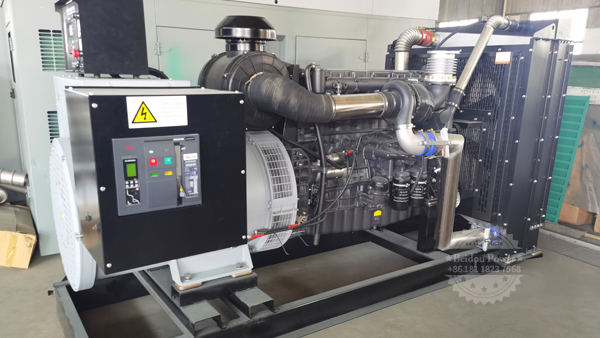All walks of life are developing continuously. In recent years, diesel generator sets have not stopped. They have been constantly updated, and the technology has become more and more advanced. The following are some of the key technical projects developed in recent years for you:
(1) Common rail and four-valve technology. At present, foreign diesel engines generally use the combination of new common rail technology, four-valve technology and turbocharged intercooling technology, so that the engine achieves good results in terms of performance and emission limits, and can meet the requirements of Euro 3 emission limit regulations. Common rail (fuel pressure is generated from fuel injection separation). (Yananda Yanan Group: R&D and production of diesel generator sets and fuel cells) The four-valve structure (two intakes and two exhausts) can not only improve the charging efficiency, but also because the fuel injectors can be centered, so that the porous oil beams are evenly distributed, It can create conditions for good mixing of fuel and air; at the same time, the intake port can be designed as two independent structures with the same shape on the four-valve cylinder head to achieve variable swirl. The coordination of these factors can greatly improve the quality (quality) of mixture formation, effectively reduce soot, HC and NOX emissions and improve thermal efficiency. (Yanand Yanan Group: R&D and production of diesel generator sets and fuel cells)
(2) High pressure injection and electronically controlled injection technology. High-pressure injection and electronically controlled injection technology is one of the important measures to reduce diesel engine emissions in foreign countries. Emissions, improve the performance of the whole machine (vehicle).
(3) Supercharging and intercooling technology. The use of turbocharging to increase the air volume of diesel engines and improving the excess air factor of combustion is an effective measure to reduce exhaust smoke, PM (particulate emission) emissions and fuel consumption under heavy load conditions. An effective air-to-air cooling system can reduce the temperature of the supercharged air to below 50°C, and the reduction of the temperature of the working cycle contributes to the low emission of NOX and the reduction of PM. Therefore, the diesel engines for heavy vehicles are generally supercharged. Cool type, which contributes not only to low emissions but also to good fuel economy. In addition, the application of the exhaust bypass valve before the turbo can not only reduce PM and CO emissions, but also improve the transient performance and low-speed torque of the turbo diesel engine.
(4) Application of Exhaust Gas Recirculation (EGR) Technology Exhaust gas recirculation. EGR is a technology commonly used in advanced internal combustion engines in developed countries. Its working principle is to introduce a small amount of exhaust gas into the cylinder. This non-reburnable CO2 and water vapor exhaust gas has a large heat capacity, which can increase the ignition delay period of the combustion process. The combustion rate slows down, the maximum combustion temperature in the cylinder drops, and the NOX generation conditions are destroyed. EGR technology can significantly reduce NOX emissions from motor vehicles, but for heavy-duty vehicle diesel engines, intercooling EGR technology is currently preferred because it can not only significantly reduce NOX, but also maintain low levels of other pollutants.
(5) Post-processing technology. The goal of diesel aftertreatment is to further improve PM and NOX emissions. At present, the installation of oxidative catalytic converters and the research and development of NOX catalytic converters and particulate traps with good regeneration capacity are mainly used.
(6) Reduce oil consumption. A considerable part of the particulate matter emitted by diesel engines comes from the combustion of oil with heavier fractions. In order to meet the increasingly strict requirements of diesel engine (vehicle) emission limit standards, the combustion of oil must be reduced to a minimum, that is, the consumption of oil must be minimized on the premise of ensuring the normal operation of the engine. In order to reduce the oil consumption of diesel engines, the optimal design and manufacture of piston rings and the scientific configuration of cylinder liners are very important.
Post time: Sep-01-2022

